13 Minutes
Genesis refreshes the GV60: what’s new and why it matters
Genesis has given its compact electric crossover a noticeable mid-life lift. The GV60’s facelift brings the brand’s “Athletic Elegance” design language more clearly into focus, while under the skin a new fourth-generation battery raises usable capacity and claimed range. Genesis has also reworked the cabin, added more driver assistance modes and some playful performance tech — including a drift mode and a Boost function on Performance variants. To test how meaningful these updates are, I spent time with both the top-spec Performance model on track and the entry-level Pure on public roads and an obstacle course.
First impressions: sharper looks and a bolder stance
From a distance the updated GV60 feels less whimsical than the original. The previous front end — which some likened to a Beluga whale — has been toned down in favour of a crisper, athletic face. A redesigned bumper, tighter grille treatment and a more pronounced splitter work with new micro-lens array headlights to give the crossover a more focused presence. Body-coloured wheel arches and side skirts tidy the profile, and buyers can choose two-tone wheels in 19-, 20- or 21-inch sizes.
This is not just cosmetic: the refreshed styling ties the GV60 more closely to recent Genesis models such as the electrified GV70 and G80 and telegraphs the brand’s move toward sportier variants — think GMR-001 hypercar inspiration and the Magma performance program.

Battery, charging and range: a meaningful bump
One of the most significant updates is the switch to fourth-generation battery cells. Usable capacity rises from 77.4 kWh to 84 kWh. In practical terms that translates into improved range: the entry-level Pure now claims up to 348 miles WLTP — roughly 27 miles more than the outgoing model.
Charging capabilities are also preserved despite the larger pack. Genesis states a 10–80% DC fast charge can be achieved in about 18 minutes. An upgraded battery conditioning system now includes active cooling as well as heating, which helps the pack reach and maintain ideal temperatures before and during rapid charging — a function absent from earlier GV60 variants.
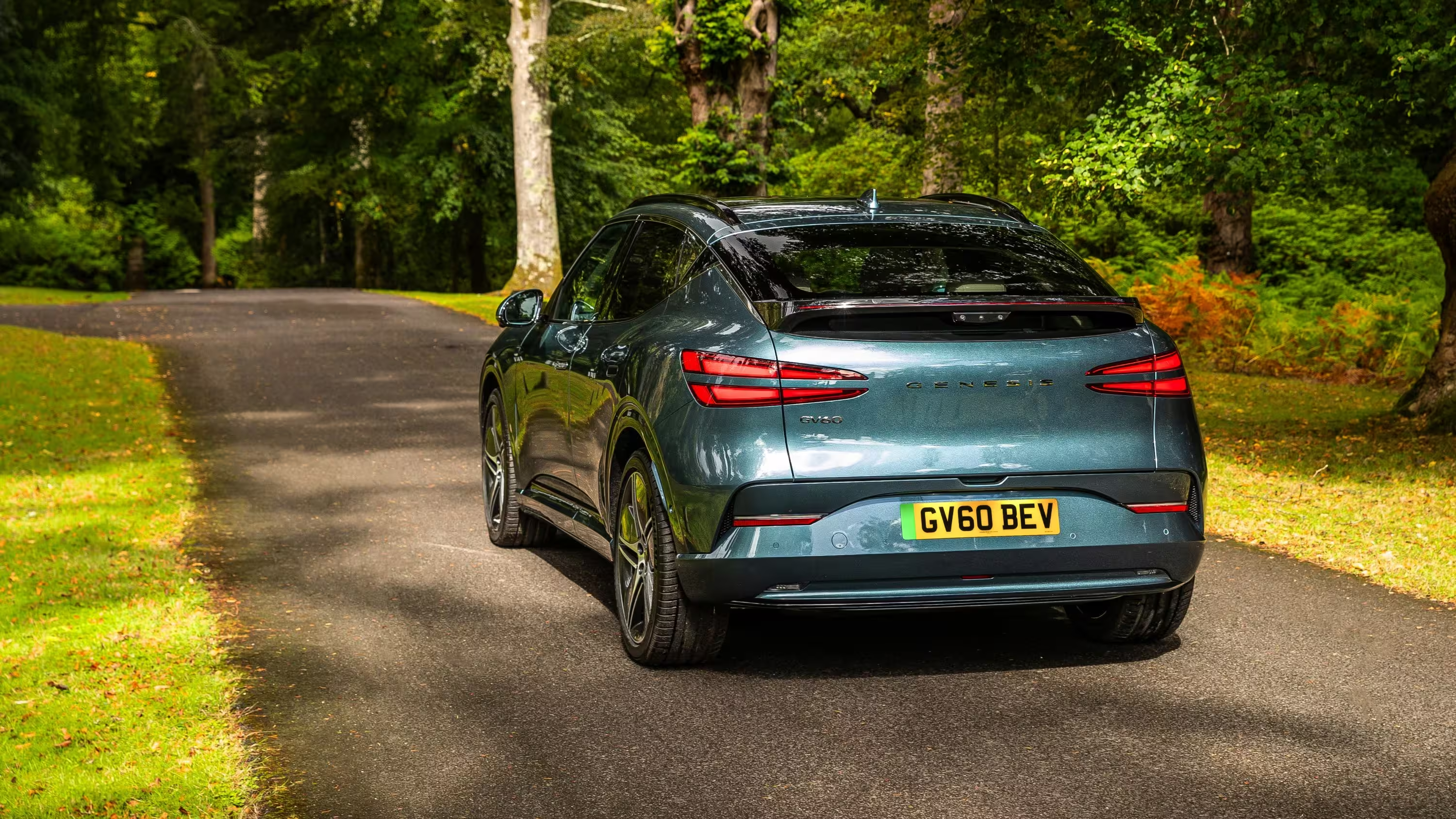
Key battery and charging figures
- Battery: 84 kWh (fourth-generation cells)
- Claimed range (Pure, WLTP): 348 miles
- Fast-charge (10–80%): approx. 18 minutes
- New battery conditioning: heating and cooling for optimal charging
Technology and creature comforts
Inside, the GV60 receives several welcome upgrades. The new D-shaped steering wheel is a small but effective evolution, improving visual harmony with the dash and the car’s sportier image. Drivers can opt for a panoramic 27-inch OLED screen that sweeps across the cockpit, and a wireless phone charger is now standard on many trims.
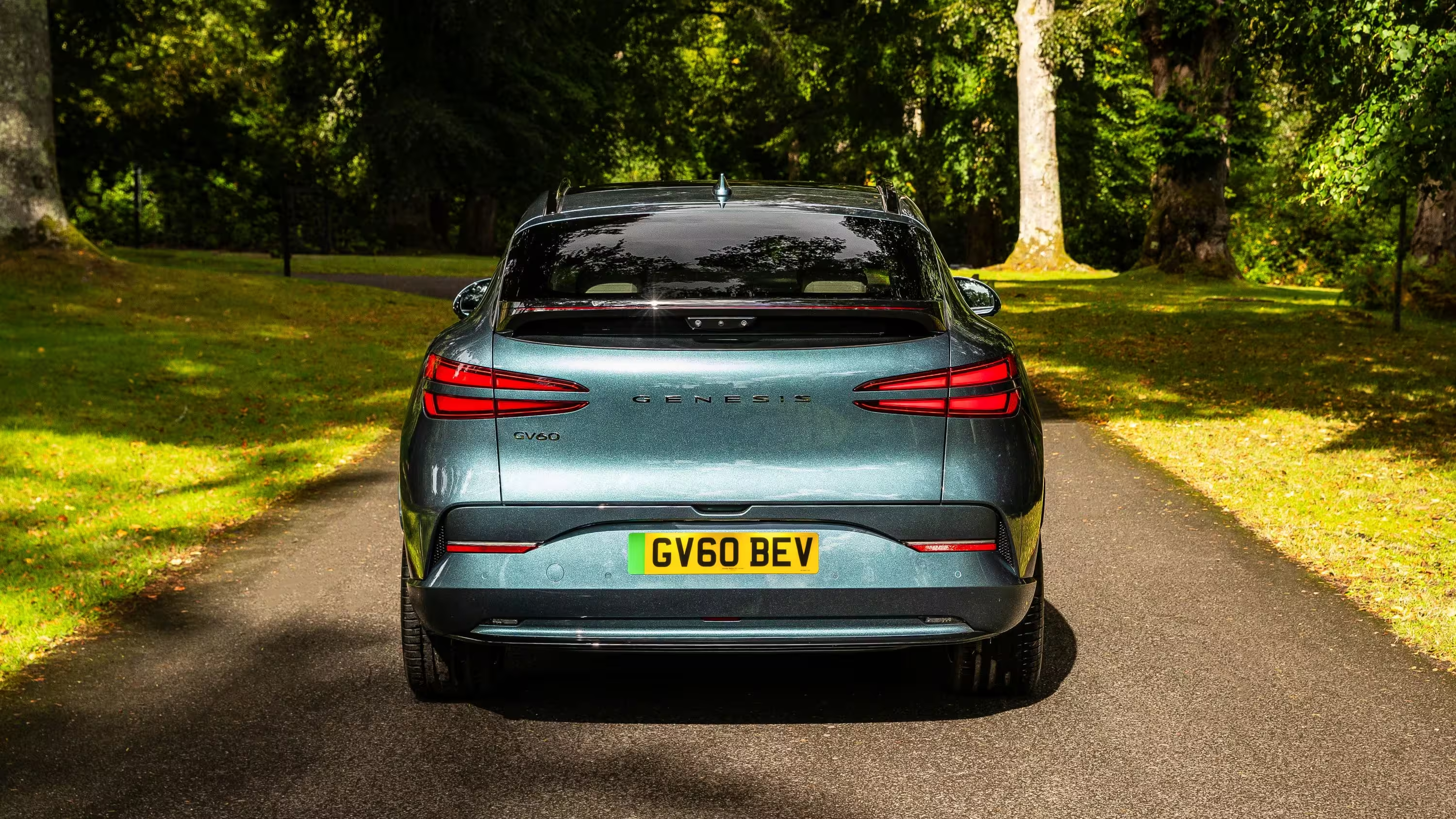
The GV60’s software ecosystem has been improved: the smart regenerative braking system gets an enhanced Auto mode that automatically adapts regen intensity to upcoming traffic features — such as roundabouts, speed bumps and even known speed camera locations. Connectivity perks include the ability to stream apps like Netflix and Disney+ while parked or charging, and lane following assist gains a hands-on detection feature to check when the driver’s hand is on the wheel.
Other highlights: a virtual gear shift (for that synthetic but modern feel), additional parking assist modes, and performance-focused options on the Performance trim including an optional built-in dashcam.
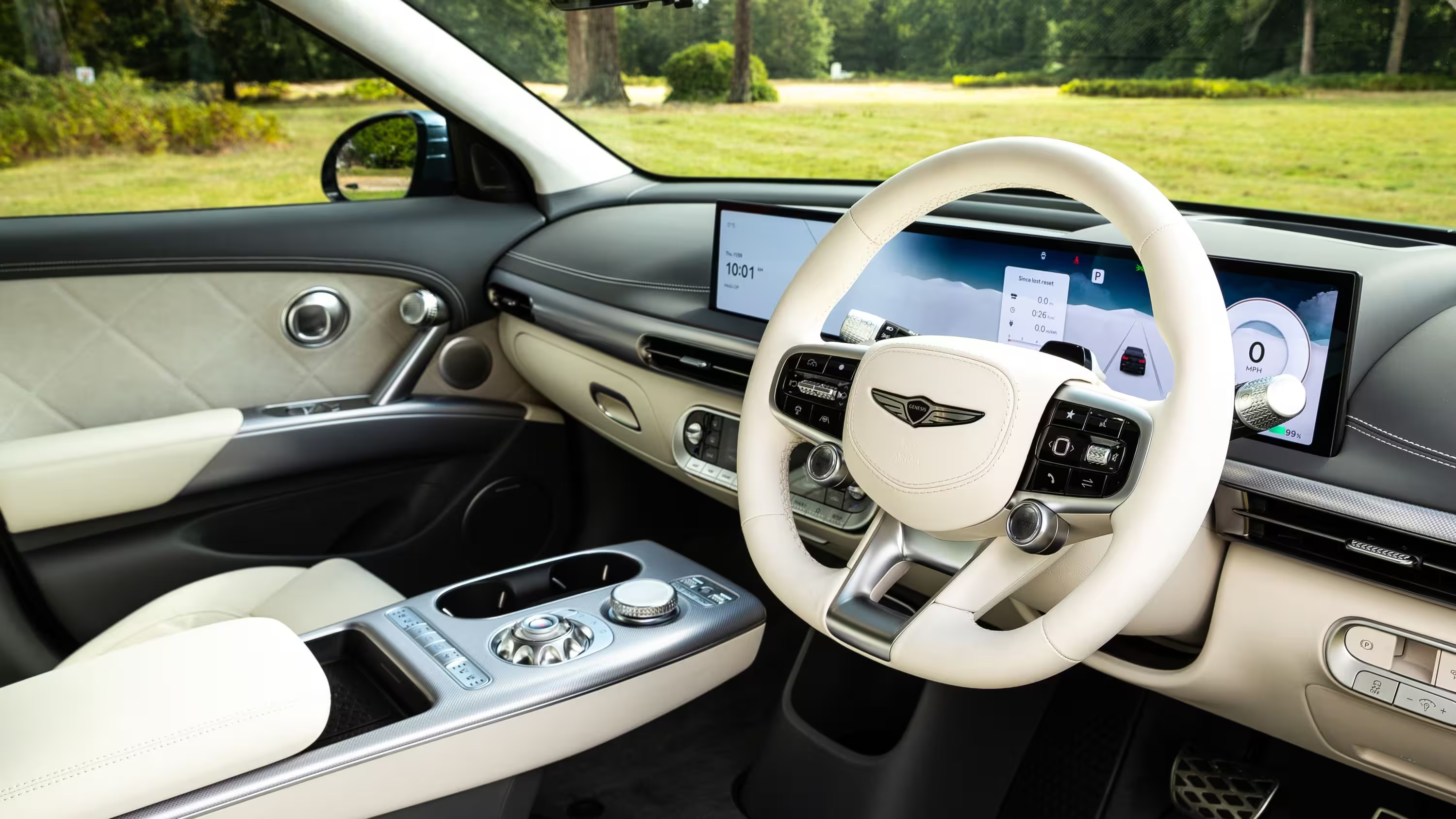
On the track: Thruxton and the Performance GV60
If the GV60’s natural habitat is an urban commute or a fast A-road, you might wonder why Genesis invited journalists to Thruxton — the UK’s fastest circuit. The answer is as much about brand signalling as it is about learning limits: Genesis is increasingly positioning itself as a marque capable of performance halo cars, and showing the GV60 at a circuit ties into the GMR-001 hypercar and the Magma program.
The Performance GV60 I took out was an all-wheel-drive dual-motor car with a 311-mile WLTP range figure. Peak output sits at 435 PS (approx. 428 bhp), but a momentary Boost button on the steering wheel unlocks 490 PS for ten seconds — useful for an all-out sprint or an overtaking manoeuvre. The model also features an electronic limited-slip differential and dynamic torque vectoring to route drive to the wheels that need it most.
Stepping out of the pit lane at Thruxton was a mixture of anticipation and mild dread. The circuit’s high-speed, flowing corners make it unforgiving of heavy weight or soft body control; the GV60 weighs in around 2.2 tonnes. Yet on my first flying lap the Genesis surprised me. It hauled itself into the braking zone at Campbell with composure and, despite its mass, decelerated confidently. The heavy braking required at Thruxton is a real test — and the GV60 passed without drama.
That said, the car’s SUV proportions and height show during sustained high-speed transitions. The fast Noble section highlighted body roll and a tendency to lean; in the most demanding corners I found myself metaphorically "driving on the door handles" to keep the line. In short: it’s competent for an SUV, but it’s not a lightweight hot hatch.
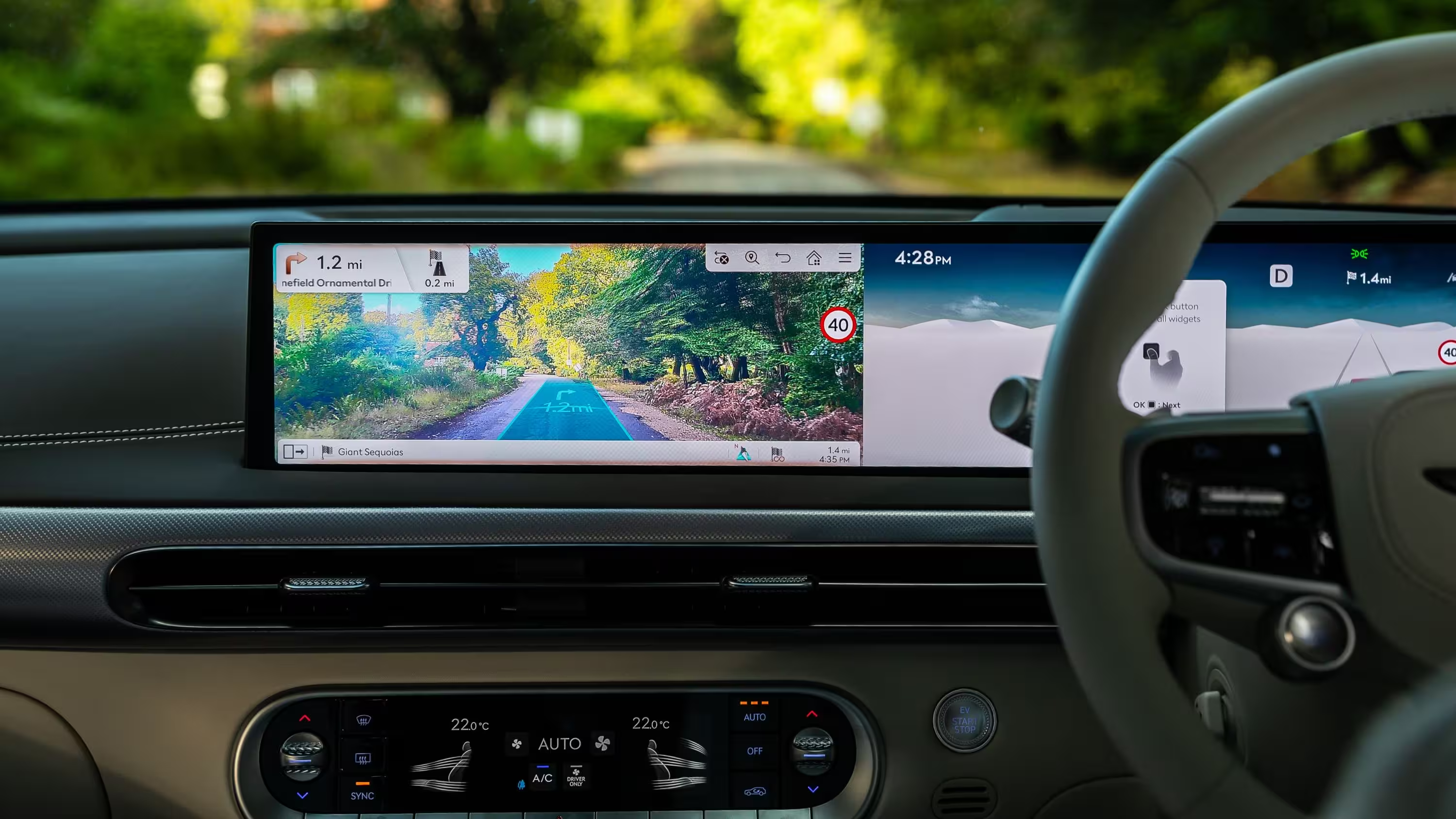
Track takeaways
- Braking: reassuring for weight class
- Cornering: good grip, but notable body roll in high-speed sweepers
- Dynamics: electronic diff and torque vectoring make a real difference
- Driver aids: Boost mode adds an instant thrill; drift mode is playful but niche
Why show an SUV at Thruxton?
It’s fair to ask why Genesis would choose Thruxton to showcase the GV60. The answer lies in narrative. Genesis is signalling future ambitions: it plans to field cars in WEC and IMSA from 2026 and 2027 and is building a performance halo that includes the GMR-001 hypercar. Demonstrating that an electric SUV can be driven hard at Thruxton — even if it isn’t optimised for the task — is part of a broader brand-building exercise.
Moreover, it aligns with the Magma program. The GV60 Magma — already spied testing — promises a more aggressive exterior (bigger bumper, rear wing) and much higher performance. Rumours point to an 89 kWh pack and a 641 bhp dual-motor setup, with performance levels comparable to Hyundai’s Ioniq 5 N but with a luxurious character aimed at the "gentleman driver." Whether those figures are final is speculative, but it explains why Genesis wants to be associated with circuits.
On the cones and the road: Pure trim impressions
Before the track session I ran a Performance car through an obstacle course. It accelerates hard — Genesis claims 0–62 mph in about four seconds with Boost. The slalom revealed similar body lean to the circuit experience; the car is quick and eager but shows its crossover origins in lateral motion.
For everyday driving I spent more time in the Pure trim, which replaces the previous Premium offering. The Pure I sampled came with a black interior — a welcome change from the light-cream cabins I’d seen in earlier cars. Black leather, metal touch-points and well-executed materials still deliver an understated luxury mood.
The Pure’s single rear-mounted electric motor produces 168 kW (228 PS) and 350 Nm of torque. Claimed WLTP range is 348 miles, with 0–62 mph in 7.8 seconds. It doesn’t have the strap-you-back acceleration of the Performance car, but on rural A-roads and the highways around Thruxton it felt more than quick enough.
Ride quality in the Pure is firmer than some mainstream rivals. Small bumps register through the cabin and the steering is on the sharper side, which can make the car feel a touch fidgety over imperfect surfaces. Switching to Sport mode tightens up the body control and steering feel, reducing the perceived lean and making the car feel more composed.
What I liked about the Pure
- Smooth, linear power delivery
- Excellent regenerative braking with improved Auto mode
- Luxurious interior finishes despite the darker palette
- Strong range for the segment
Regenerative braking: Auto mode that actually helps
The GV60’s improved regen Auto mode deserves praise. Instead of leaving motorists to toggle between preset regen levels, the system adjusts automatically to upcoming road features. It will ramp up regen when approaching roundabouts, speed bumps or known camera locations — and reduce it where coasting is a priority. As someone who normally fiddles between regen levels, I found the Auto mode both accurate and unobtrusive: it felt like the car was anticipating my needs rather than taking control away.
Pricing, options and the customer experience
Genesis has chosen to keep the updated GV60’s pricing broadly in line with the outgoing model — but with notable changes to what’s standard. The entry-level Pure starts at £53,115, the mid-range Sport at £58,515, and the Performance from £67,715. Optional packs remain:
- Comfort Pack (including an 18-way ergo-motion driver’s seat with massage): £2,930
- Innovation Pack Plus: price varies by trim and can add features like the digital centre mirror and Face Connect
A few features that were once standard are now optional. Genesis argues some items — notably Face Connect — were underused by customers and are better sold as extras, which helps keep headline prices stable.
Retail strategy and the Son-nim philosophy
Genesis is also evolving how it sells cars. After an initial online-first approach, the brand has expanded to partner retail locations and physical dealerships. This shift allows would-be buyers to touch, feel and test cars — a critical move for a luxury marque aiming to broaden its European footprint in 2026 and beyond.
That expansion links to Genesis’ Son-nim philosophy — a Korean term meaning “honoured guest.” The intent is to provide concierge-level customer care: people first, service second. In practice this means longer showroom dwell times, detailed product introductions and more personalised aftersales.
How the refreshed GV60 stacks up
Comparatively, the GV60 sits in a crowded EV compact-luxury crossover market. Its strengths are clear:
- Distinctive design that’s moved toward an athletic, premium identity
- Improved range courtesy of a larger battery
- Strong technology offering and unique touches like drift mode and virtual gear shift
- A premium interior experience and better in-dealership presence
Areas where the GV60 remains challenged:
- Ride firmness and some fidgetiness over rough surfaces
- Body roll in aggressive high-speed cornering compared to lower, sportier EVs
- Optional packs add cost if you want the full suite of comfort and convenience features
If you compare it to rivals such as the Ioniq 5 (and the performance-focused Ioniq 5 N), the GV60 leans more into luxury and presentation. If Genesis follows through with Magma variants, it could bridge the gap toward genuine hot-hatch territory while preserving a premium character.
Verdict: a meaningful evolution, not a revolution
The updated Genesis GV60 is an incremental but meaningful improvement. The larger 84 kWh battery and resulting range uplift address one of the most important buying considerations for EV shoppers. Design tweaks and a sharper interior keep the car feeling contemporary and align it better with Genesis’ forthcoming high-performance strategy.
On the road the GV60 Pure remains a comfortable, refined electric crossover with plenty of range for most buyers. On track, the Performance variant impresses for what it is: a heavy but well-engineered performance SUV that benefits from software-aided traction and torque vectoring. It’s not the last word in corner-carving dynamics, but it’s an engaging, usable performer.
For buyers who value style, range and a luxury-focused ownership experience, the revised GV60 is compelling — especially at a price that hasn’t ballooned despite the updates. For driving purists who prioritise razor-sharp handling above all else, rivals with lower ride heights or dedicated sport variants might be more appealing.
Highlights at a glance
- New 84 kWh battery with up to 348 miles WLTP (Pure)
- Faster charging, battery conditioning with active cooling
- Fresh exterior with more athletic cues and new wheel options
- Interior upgrades: D-shaped steering wheel, 27-inch OLED, improved regen Auto mode
- Performance model: AWD, 435 PS (490 PS for 10s with Boost), torque vectoring and eLSD
- Price band: approx. £53k–£67k depending on trim
Genesis’ refreshed GV60 is proof that subtle evolution can be the right answer. It sharpens what was already a strong package, adds credibility to the brand’s performance ambitions and makes the crossover a more attractive proposition for buyers who want a luxury EV with a sporty flavour. With Magma variants and motorsport plans on the horizon, Genesis is quietly reshaping its identity — and the updated GV60 is the first step in that next chapter.
"The updated GV60 offers a slightly improved driving experience while keeping the luxury feel — and at a similar price it’s a win for buyers who want style, range and a touch of performance."
Source: autoevolution
Comments
alexK
Not a revolution but sensible upgrades. If Magma hits 641 bhp that could be a wild, classy sleeper.
deepmotor
Makes sense tbh, 84 kWh is welcome. Still prefer lower ride though for real cornering fun
labcore
Drift mode in an EV crossover? kinda gimmicky, but curious how torque vectoring actually behaves on wet roads.
coinflux
Feels a bit like marketing flex, Magma this, hypercar that. Still, range bump is legit, price ok but options add stealthy costs.
leo.fx
Pretty balanced take. Solid upgrades, I like the battery conditioning and the OLED screen, yet ride may annoy some.
Armin
I've owned EVs, that regen Auto sounds useful, saved my commute on one car so would try it here. But price packs add up...
citylane
Is the 10-80% charge claim realistic on UK chargers? wondering about real life temps, battery life etc
driveline
Makes sense tbh. Nicer looks, better range, still feels SUV-y in corners.
mechbyte
Wow, 348 miles WLTP and a drift mode? Didn't expect Genesis to get this spicy, curious how real world holds up.

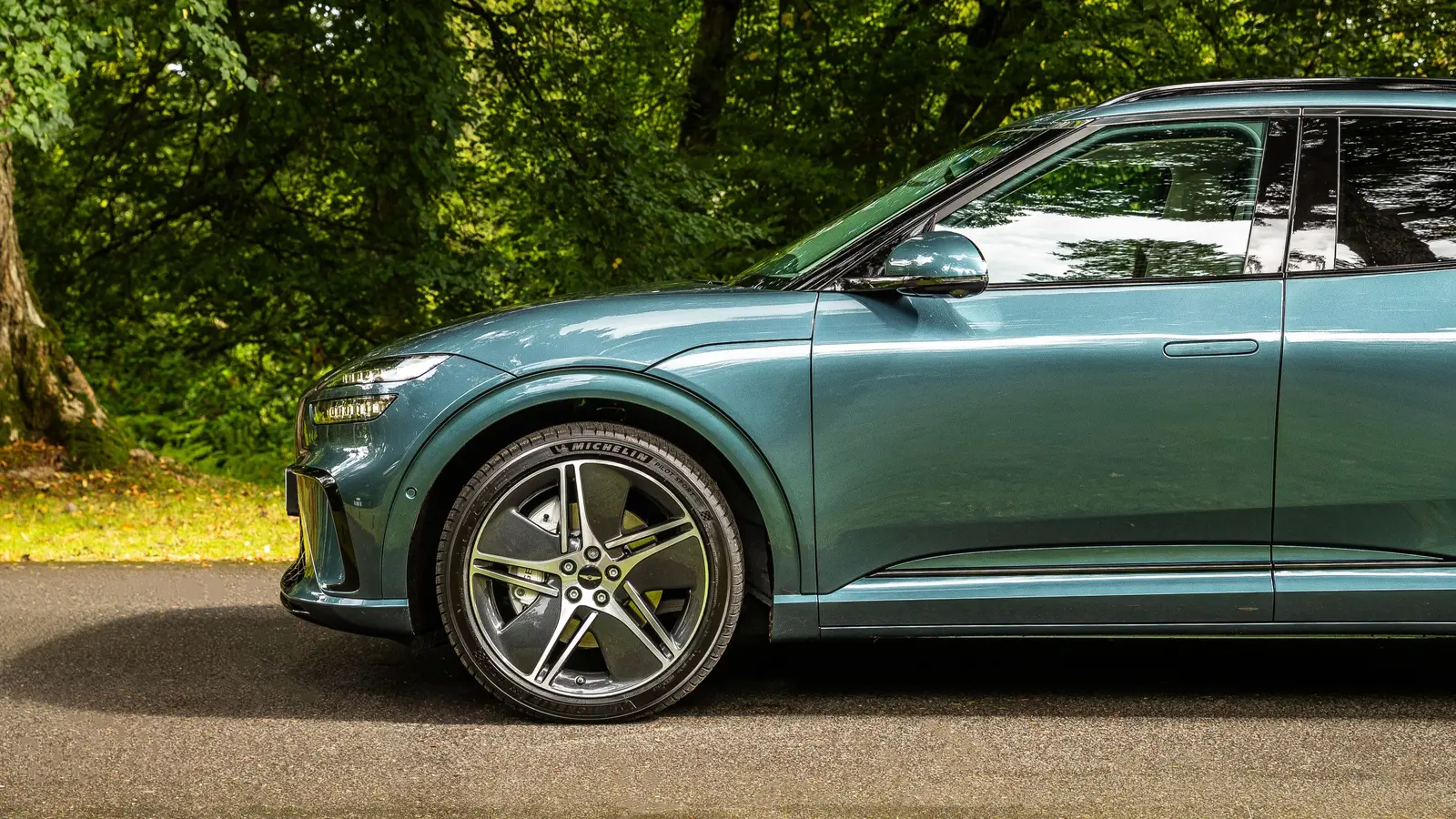
Leave a Comment